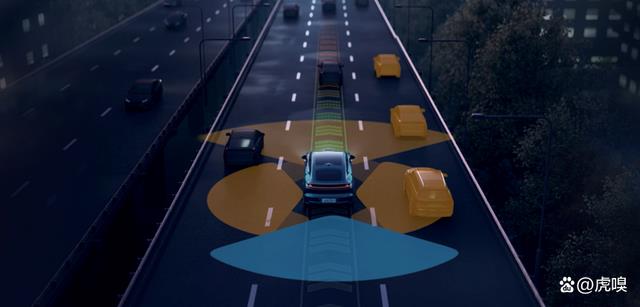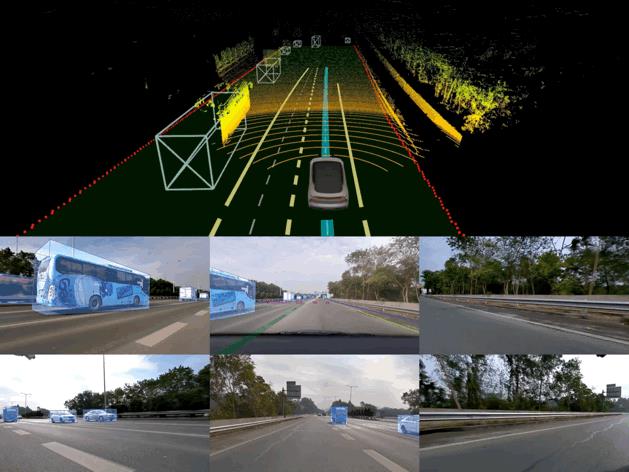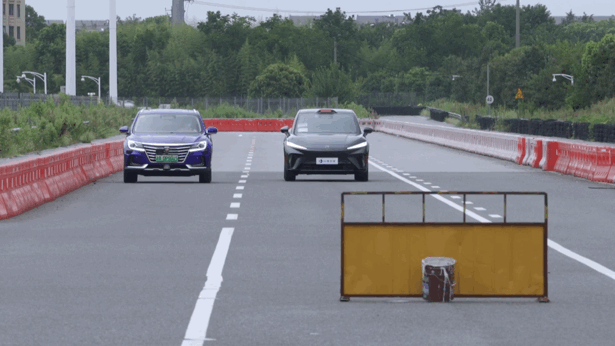Recently, the COVID-19 epidemic has shown a multi-point outbreak and spread trend in Germany. In order to help the compatriots in the consular district to prevent and control the spread of COVID-19 virus more scientifically and effectively, and to help the local people in the same boat and overcome the difficulties together, the Consulate General of China in Dü sseldorf, with the assistance of the Shanghai Foreign Affairs Office, specially invited Professor Zhang Wenhong, director of the Infectious Diseases Department of Huashan Hospital affiliated to Fudan University in Shanghai, leader of the medical treatment expert group of COVID-19 in Shanghai and member of the Standing Committee of Infectious Diseases Branch of Chinese Medical Association, to give a special lecture by video link on March 17th.
On-site photo of video connection activity Image source: "Consulate General of China in Dü sseldorf" WeChat public account
The full text of the lecture is as follows
Q: What kind of disease does COVID-19 belong to? What are its characteristics?
A: Human experience in controlling diseases is gradually accumulated. So far, our experience with this disease is, please remember, this virus is not as bad as SARS, if we give patients the best treatment. What is the mortality rate of SARS? About 10%, that is to say, one out of 10 people died and 10 out of 100 people died.
So what’s the fatality rate in Covid-19? According to Germany’s current data, there is less than one in 100 people. This is the data of Germany today, but it seems that Italy is not like this. I won’t talk about Italy today. The situation in Italy is different from that in Germany.
What is the situation in China now? The case fatality rate in Shanghai is also this data, and the case fatality rate in China has basically reached this level now, with at most one or two deaths among 100 people (outside Hubei).
How many deaths among 100 people in Japan? 1.5. There were no deaths in Singapore and Malaysia. There are now more than 400 confirmed cases in Malaysia. You can say that it is because of the hot weather there. There are more than 350 cases in Shanghai, and 3 cases died, and how old are these three patients? The first patient is 89 years old, the second is 78 years old, and the third patient is severely obese with heart disease. What are these examples trying to illustrate? Compared with SARS, the level of this disease is really small.
Q: Where is the harm of COVID-19 virus?
A: Because it is not as bad as SARS, it can’t be recognized at the early stage. Maybe the symptoms are so slight that you can’t feel them at all, so you will see some people around you who may have no symptoms, or have very mild symptoms, such as a low fever, which may not be clear with a thermometer. What will this lead to?
Because the symptoms are not obvious, patients will walk around. For example, in an indoor activity in Germany some time ago, the number of participants reached more than 1,000, and such cases were mixed. Maybe he felt a little sick when he went that day, but he insisted on attending because his symptoms were not obvious, and then it spread to more people, because it was still very contagious at this time.
But if it is SARS, this is not the case at all. Because serious symptoms will appear within 2 to 3 days, and the time from illness to severe illness is very short, so once you get sick, you can’t go out and act. How can you infect?
Therefore, the particularly powerful virus does not spread so fast and so widely. The characteristic of Covid-19 is that it is not as powerful as we thought, but its spread is extremely strong. How strong is it?
The pandemic influenza that broke out in the United States and Mexico in 2009 also spread to Europe at that time. Tens of millions of people in the United States are infected, but the mortality rate is very low, which is one tenth of that in COVID-19, that is, 0.1% to 0.2%. At that time, the world was also very scared at first, and took very active prevention and control measures. Later, it felt that the mortality rate was not high, and it soon gave up active prevention and control measures. At that time, many people were infected, but most of them were fine after infection. So you can understand why there are so many contradictory views this time. Some countries think it’s fierce, others think it’s ok, and more countries think it’s nothing at first, but now they think it’s not, so they start to take more active prevention and control measures.
Q: When will these cases be greatly controlled?
A: It is expected that most cases will be well controlled this summer, and the epidemic will experience a trough. But after the summer, it is hard to say whether it will recur in the next winter. After the summer, the number of patients will decrease, but there will always be sporadic patients, which will last until this winter, and then there may be a small peak next spring, and then slowly come down. This does not rule out communication with the opposite southern hemisphere, because there are fewer cases in the northern hemisphere in summer, but in the southern hemisphere in winter, they will also transport cases to each other. Going back and forth, even if it lasts for a year or two, is normal. But we have to believe that we have come here so many years and so many times. So I’m sure I’ll survive this time, for sure.
Q: And if I get sick, how high is my risk? What should I do?
A: This is a matter of great concern to everyone today. Of course, the best way is that you don’t get sick. What are the chances of not getting sick? With the intelligence of China people, we can actually try our best not to get sick. If you are a responsible person and do your own protection correctly, I think the risk of infection is extremely low. The risk of infection in COVID-19 only occurs in close contact, and there is no risk without contact. Please ask yourself: Can you avoid all unnecessary social activities at this time node? If you say you can’t avoid social activities, what are you talking about going back to China? Isn’t the social relationship and communication with Germany broken when I return to China? Therefore, reducing the frequency of contact can greatly reduce the risk of illness.
Q: How to understand Germany’s epidemic prevention policy?
A: On the Internet, we also read a lot about disease prevention and control. Everyone saw that the UK seems to be starting to use group immunization. The German Chancellor said that 60%-70% of people will eventually get infected.
It is not appropriate to understand the epidemic prevention policies in Germany and Britain in this way, especially in Germany, which has a very powerful Robert Koch Institute. The decision made by Germany today is well thought out. We are here today to talk about how different strategies adopted by different countries are considered. Under the premise of this consideration, how can we adopt the most favorable strategy for ourselves? This is a question we want to discuss today. Students studying in Germany now, as well as a large number of Chinese-funded enterprise personnel, belong to a very high level of knowledge, and they are all people who can make judgments based on facts.
Today, I will briefly review the situation of epidemic prevention and control in China, and then briefly review the differences between the work done by various countries, and also briefly review the situation in Europe, and make a general forecast of the future epidemic.
In fact, the epidemic situation in the future has been in the process of dynamic change, and anyone’s prediction may be wrong. The development of the epidemic situation cannot be accurately predicted at this time node today. Why do you say that?
Because the strategies adopted by every country are changing every day, but there is a good trend that everyone is becoming more and more active. As long as the strategies of various countries become more and more active, it is actually only a matter of time before the international epidemic is finally effectively prevented and controlled. Whether it will end this summer or the end of the year, whether it will end next summer or the end of next year, in fact, these problems are all related to the epidemic prevention and control strategy we have adopted worldwide!
After the outbreak of the epidemic, China’s scientific research institutions began on January 1, and in fact it took only five to seven days to figure out the disease, which is very fast in history. When SARS broke out in 2003, we were not so fast. This time, between January 1 and 7, the country took out the virus sequence and announced it to the world on January 10.
Some countries that thought the epidemic was fierce from the beginning were very active in prevention and control. Take Singapore as an example, strict management measures were taken at the beginning. Even now, it is stricter than Germany and most European countries. There are nearly 800 clinics in Singapore that can handle these fever patients and provide them with help. As long as patients appear, they will immediately track these patients, who they infected and who they contacted, and do a good job. This is similar to our cities in China, such as Shanghai and Peking.
As I mentioned earlier, this virus is not as bad as SARS, and its transmission is similar to that of influenza. At first, everyone thought that the mortality rate was 1%, but soon the problem came. What’s the problem?
When so many people get sick, there will be many serious diseases, so the proportion of serious diseases will reach about 20%. In fact, according to the situation in Shanghai and Germany today, most of these critically ill patients will recover after treatment, even if they are critically ill. But when tens of thousands of people in the city are sick at the same time, the capacity of the city is limited. Singapore has always kept the number of its own fever patients at a few hundred, and dealt with one when it appears.
When there are a large number of patients in a city at the same time, the biggest problem is that the beds are full, which makes the seriously ill patients unable to live in and stay outside, which is a reason for the particularly high mortality rate. Many severe patients need to establish very good oxygen therapy, which is a complex system. Mild patients only need a nasal catheter, severe patients may need a ventilator, and particularly severe patients may need artificial lungs. Germany has purchased 10,000 ventilators. What is the concept?
Generally speaking, about 5% of patients need a ventilator. For example, among the 350 patients in Shanghai, more than 20 may eventually use ventilators. Assuming that 10,000 ventilators are purchased, this does not include the existing ventilators in Germany. If 10% of people need ventilators, it can at least meet the needs of extremely severe patients among 100,000 patients. The scale of purchasing ventilators in Germany is equivalent to at least 100,000 patients.
Germany has taken a series of measures, including the closure of schools. The mortality rate in Germany is less than 0.5%, which has little to do with the level of doctors, but mainly depends on disease management and medical resource management. If the epidemic spreads further, the German robert koch Institute is one of the best laboratories for clinical microbiology on earth, with a history of more than 100 years. In a few days, it will be March 24th, which is World Tuberculosis Day. Mycobacterium tuberculosis was discovered in robert koch. If the institute works with the German government to formulate prevention and control strategies, it will make corresponding adjustments according to the epidemic trend.
In Wuhan, China, this situation was the most correct measure taken by the state after a large number of patients appeared. Looking at Shanghai and Beijing, we have started to resume work for some time now. If it was not the Spring Festival and there were not many imported patients like Shanghai at first, would we take measures such as stopping production and closing schools? Actually, it’s hard to tell now. The best opportunity I met at that time was the Spring Festival. At the time of the Spring Festival, I told everyone to stay at home for two weeks, because if you don’t get sick for two weeks, it will prove that you are not a patient. If you get sick, go to the hospital. Most cities in China take this measure. If two weeks is not enough, they will be closed for another two weeks, and the problem will be completely solved.
There are no cases in many cities in China today. There is no doubt that this data is correct. We are all confined around our homes. I know the detection situation of all large general hospitals in Shanghai, and there have been no new cases in the past few weeks, largely because we caught up with the Spring Festival and successfully suffocated the disease. What about now? We are working hard to get back to work.
Now, except for some states, the number of cases in most cities in Germany is in single digits. Do you think Germany will adopt the strategy of stopping all activities in China during the Spring Festival, or will it adopt the strategy of maintaining normal business operation in Singapore today? In fact, Singapore’s medical system is similar to that of Europe and the United States, but this country embodies the wisdom of Asia and Europe, which means that the European medical system, together with the urban management of Asians and the cooperation of Asian people, perfectly integrates these eastern and western wisdom. Is it necessary for Germany to adopt the practice of China? First, at present, Germany is not as serious as China. Second, there is no time node like the Spring Festival, which is related to the stage of the epidemic.
According to the current situation in Germany, except for North Rhine-Westphalia, which has a large number of cases, and a little more in several southern States in Germany, the number of cases in most cities is not very large, and it is scientific to adopt the control strategy of treating symptoms one by one.
If Germany completely adopts China’s measures at this stage, it will face problems immediately. There is an article in The Lancet magazine, which makes sense. If you want to do such a thing, you have to synchronize the whole world. If North Rhine-Westphalia has done this, Hamburg and Berlin have not taken the same measures, and the efforts will be in vain.
The epidemic is now spreading in Germany and other countries for a long time to come. If the whole world is spreading, the epidemic will be prolonged. Because if the disease is to be cured in a very short time, it must be taken by extremely drastic measures. China took the most active measures from the beginning, which is related to the different stages of the German epidemic. The measures taken by China were responsible. We had a wonderful idea at that time. Everyone knew that the people of China were kind. Our idea at that time was that we should control the epidemic well even if our days were over. And we did it, at least we did our duty.
But today, Germany or other countries, even if Germany takes very active measures, if other neighboring countries do not take them, Germany will still face the risk of import. China is now facing such imported risks, which is the same as German. So don’t think that the situation in Germany is very bad now, and the situation in China is very good. China is also facing imported risks every day, and all countries are.
Now North Rhine-Westphalia has taken measures such as closing schools, closing entertainment venues, canceling unnecessary gatherings and unnecessary purchases to slow down the pace of everyone’s life. I put forward this idea a long time ago. After slowing down the pace of people’s life, some infected patients will emerge one by one, and all these cases will be sporadic. With the current medical system in Germany, it is capable of handling sporadic cases.
Q: Where is the German epidemic going?
A: I can basically tell you now that you can stop thinking that this epidemic will end in Europe in a short time.
We in China took measures to stop all the activities in the city, and then we got it under control. If the whole world has agreed that all of us will stop now and stop for four weeks together, then the whole world can control it. I told you earlier that you want the whole world to stop at the same time. I can’t imagine it. It is also difficult for you to stop Germany and Europe as a whole. If other European countries stop, only Germany stops, even if you don’t have any patients, you will be very sad in the later days, and there will be imported cases.
Therefore, the current strategy, the strategy of the whole of Europe is actually the same. First, it is necessary to greatly improve the control of medical power in the community. Second, improve the ability to treat critically ill patients. Third, control all kinds of activities in the city.
I specially brought the data from Britain and Germany today. Recently, they all have an upward trend, and the data in Germany is still slightly higher than that in Britain. Germany has taken measures, and we will wait for its peak to appear later. If the peak does not pass and the epidemic continues to spread, Germany will definitely introduce a higher level of prevention and control measures. Recently, German Chancellor Angela Merkel said that our worst result may be that 60%-70% of Germans will be infected. I think she must say this sentence. Why? If she didn’t speak this sentence, the current measures could not be introduced, various places could not be closed, and various activities could not be cancelled. Therefore, Chancellor Merkel directly tells you the worst result now. The worst result is that 60%-70% of people will be infected, but this worst result is based on the premise that no measures will be taken in Europe, and there will be no vaccines and specific drugs in the future, and there will be no drugs and vaccines in the next few years.
So what is the concept of 60%-70% in the history of human infectious diseases? That is to say, if you don’t take any measures, our infection rate will definitely reach this level. After reaching this level, if you don’t take any measures, the infection rate will also drop. For example, suppose I am separated from Consul General Feng by 10 people. What do you think I can do to transmit my virus to you? If I pass it on to the second person, the second person will get the disease, and then he will contact the third person, and the third person will also have no resistance, and he will pass it on to four people, but if the fourth person is resistant, he will not pass it on. Next, he passed it on to the side, and when he saw a person who had no resistance, he passed it on. Well, according to a mathematical model of infectious diseases and the spreading power of Covid-19 this time, basically when 60%-70% of people are infected, that is, 6 to 7 out of 10 people, the spreading speed of your virus will slow down at once.
For example, there is a distance of 100 meters between me and you, but if I put 60 obstacles, how slow will it be for me to reach you? As long as the spread speed slows down, infectious diseases will be controlled automatically, so Chancellor Merkel is doing science popularization, you know?
It is said that 60%-70% people in the whole country may eventually be infected. In epidemiology, this is the worst outcome. She told everyone the worst result, and the final result must be better than this. According to these measures taken by Germany today, this will not happen.
Q: What will it be like in the future? Will it last forever?
A: In fact, there is no way to predict this problem. Including scientists at the robert koch Institute. Why do you say that? It has something to do with what measures your country takes. If measures like China are taken, the disease will be gone in two months. The incubation period of this disease is two weeks. Generally speaking, if you take resolute measures, after four incubation periods, most infectious diseases can be completely controlled. In human history, there has never been a measure like China’s response to the COVID-19 epidemic.
Now, the governor of North Rhine-Westphalia is telling you the train of thought. The first measure is three words, slow down.
The second measure is to add equipment to the hospital, screen patients, isolate patients with mild symptoms at home, and then see the next development of the epidemic. If there is no big change in the epidemic, we will keep it. If there is a problem, we have to make adjustments at any time.
The measures taken by Germany today are different from those taken two weeks ago, and the German government is more active.
The development of the epidemic depends on the contest between the virus and the measures taken. Germany is just starting to start, and how to take measures depends on the situation.
Q: When will the epidemic peak come?
A: I judge that the epidemic summit will appear from April to May and June! It will be better controlled in summer, but will the disease disappear after it is well controlled? From our understanding of this disease today, this is more difficult. Because it is related to the measures taken by each place and the trend of the international epidemic, this is something I can provide you with reference.
Q: Where do we go from here?
A: Now everyone can see that the network information is very contradictory. That is to say, if you open the Internet to see Weibo today, you will see a lot of information that is very noisy, so I think that if you can live a good life, you can’t dwell on the Internet.
Therefore, we must have a very clear pre-judgment on things, so that we can decide what to do later. I believe that it is a besieged city for students now: those who are outside want to go home, but if they go home for a long time and find that there is nothing outside, then go back and find that many important things have been delayed in the original place, and then they begin to regret. This is the way things are in this world. You feel bored when you come back, and you feel flustered when you stay there.
Therefore, what kind of decision to make and what kind of decision is right, we have to predict from science. I am sitting here today. I assume that I am a parent today. I assume that my children are studying in Germany. So I put myself in your shoes, discuss with you and judge, what should we do?
Continue to finish your studies there, work there, do what you should do there, or come back first? What kind of judgment should be made to be correct?
In fact, through my conversation with you today, I don’t think I will give you a very exact answer. Whether you should buy a ticket at once, or go back to your home country after a third country turnover, these are not the questions I want to answer today.
The question I want to answer today is what facts should be based on before we can make a judgment. So I didn’t make the judgment in the end. You must make the judgment yourself.
I will only tell you the truth today. Based on these facts, your judgment is likely to be correct and in your best interest.
Where is the main infection risk of this disease? Just above the contact. There are many levels of contact. If you have returned to China, that’s very good. But if you can’t get a ticket today, I’ll tell you what you can do to keep yourself from getting infected in Germany.
In this case, we have two possibilities in Germany. One is that you come back, but it doesn’t mean that the people who stay will not work. For example, there are still some students who have not booked tickets and have not come back for the time being. Personally, I think there is nothing to despair about. Because there is no class in Germany now, you can avoid unnecessary socialization.
What does it mean to avoid unnecessary socializing in Germany? Go to public places and gathering places as little as possible. Is it risky to be with Chinese children and close friends? I can tell you, there must be risks together. But if you do as I say, you can eliminate the risk.
Q: What exactly are we going to do?
A: First, eat separately, and eat separately. Second, you should wear masks at parties. Two people are in close contact, so it is valuable to wear masks on each other. A person who stays in the dormitory will go crazy, and it is no problem to touch and wear a mask in a small range. Third, we should minimize social interaction. There are many students who study hard in Germany, and the pressure of the final exam is also great. Everyone should make good use of their time to read more books and minimize unnecessary social interaction. At present, a large number of entertainment venues are closed. If you go out to eat in restaurants, it is ok, but I suggest wearing masks to Chinese restaurants and sharing meals. The first thing to do after going out is to wash your hands. As long as you socialize less, wear masks and wash your hands, you can basically avoid infection.
This disease should prevent the risks brought by close contact. If you are not particularly sure whether your girlfriend is infected, you should stick to wearing a mask. If you buy a plane ticket and go home, you won’t see your girlfriend either. So at least we can meet now, although we wear masks when we meet and chat. So be sure to wear a mask. Avoid close contact, wash your hands, wear a mask and socialize less. You are safe in Germany.
Q: If the epidemic situation develops further and medical resources are insufficient, if China people and German natives go to see a doctor at the same time, will German natives be given priority?
A: Under the present circumstances, when Germany is extremely rich in medical resources, it may be too early for us to discuss this issue. When you think about this question, it shows that you are afraid of getting sick. Since you are afraid of getting sick, you should control your behavior.
All the fearlessness is supported by someone behind you. But when you are alone in a foreign country, you will feel afraid at this time, so you should control your behavior. According to my introduction to this disease today, I personally think that this disease can be prevented as long as you are moderate. This is the first point.
Q: Are young people safer?
A: According to our data in Shanghai, the risk of young people developing serious illness is very low without a run on medical resources. Recently, our hospital admitted more than a dozen young people who came back from Europe. These people all came back by plane together. 90% of the symptoms were very mild, and some were serious. We can basically solve them by giving him oxygen and taking effective treatment measures.
So young people, if you want to go to the hospital, first of all, you should call the local COVID-19 hotline. If the hotline doesn’t work, call your family doctor. If it really doesn’t work, you can also ask our Consulate General for help! Don’t go to the hospital for emergency treatment regardless. It’s meaningless. Why?
If your symptoms are mild and you don’t even have a fever, he won’t treat you according to COVID-19, and he will give you two tablets of cold medicine at the end. Do you think it’s interesting to queue up in the hospital for a few hours and bring back two cold tablets?
Remember, patients with severe COVID-19 have a typical feature: difficulty breathing! This is an extremely important symptom, and it is also one of the most important indicators for you to go to the emergency room of the hospital. How do you think I know if I have difficulty breathing? I suggest you take two flights of stairs. For example, if your family lives on the 20th floor, you should walk to the 3rd floor from the stairs first, and then take the elevator. You think you will have no problem walking to the 3rd floor. Your lungs are extremely good, so it is meaningless for you to go to the hospital.
If you walk to the second floor and the third floor, you will feel a little breathless. You will go to the emergency room of the hospital at this time. What does this belong to? Respiratory function is limited.
Now this season is the season with frequent colds and flu, and it is not necessarily COVID-19 that has symptoms. What if it is COVID-19? Then isolate yourself at home, then wear a mask and avoid contact with people around you. I think this should be done. After that, I don’t think you will infect people around you. There is only one possibility: don’t wear a mask, and don’t wash your hands in close contact.
Q: Will there be an unexpected explosion in Germany? Is it possible?
A: This possibility depends on whether German cities implement the measures currently taken by Germany. For example, the measures taken by Germany now are to close entertainment venues, stop parties and suspend classes in primary and secondary schools. If these measures are implemented, the explosion point will be avoided. The outbreak in North Rhine-Westphalia started with an indoor gathering of thousands of people. If these social activities are cancelled, there will be no explosion point.
Where will the patient come from now? Patients may come from some workplaces, but these patients will not appear as the first phase of the outbreak in North Rhine-Westphalia. At this stage, the practice of isolating mild patients at home is consistent with that of the United States and Singapore. What we can’t predict now is how many asymptomatic patients there are in Germany. It may have spread in various families and enterprises, which is unpredictable, so we have to start to see where these patients come from. I think the probability of a large-scale outbreak after taking corresponding measures is relatively small, but now the number of cases is still increasing. When more and more people spread behind, I believe that Germany will take more stringent isolation measures.
Q: According to our medical principles, is this kind of prevention and control measures adopted in Europe, especially in North Rhine-Westphalia, Germany, scientific and effective, or is it really the right medicine?
A: This is a very important question. Let me check the epidemic situation in North Rhine-Westphalia. As of yesterday (16th), the number of confirmed cases was 2,744, and it is increasing recently. Its growth rate is rising sharply every day. The reason for this rapid increase is that after the first outbreak, patients are now scattered in various places. At this time, the most critical node is to take isolation measures. If there is no isolation measures, if no isolation measures are taken, the later days will be very sad.
But the biggest difference between North Rhine-Westphalia and Shanghai at that time is that people are still at work. That is, the flow of people still exists, which is the only risk point. But because Chancellor Merkel said that 60%-70% people will be infected with this sentence, in fact, she told everyone the worst, and the whole of Germany has attracted attention, and it is also because after saying this sentence, the measures taken now can only land.
Next, whether you have potential patients who are still distributed in various places depends on: first, whether we really implement isolation measures during our work, such as Germany or Britain, whether young people go to bars for drinks and parties as usual after work. Second, at work, everyone’s social distance, after everyone knows this, social activities will also reduce contact. So in this case, I think this isolation is effective.
These patients who are now ill are all infected from the front, and the increased patients in these two days have been infected before the measures are taken. So it depends on its growth rate and spread speed after 14 days of taking measures. According to the number of people infected now, you can’t predict whether the measures taken today are effective. The impact of the measures taken on the incidence rate is lagging behind, and the lag time is 14 days. If the effect is not good after 14 days, Germany has to raise the corresponding level. If the response level is not increased, you will also face a problem in Germany, and the number of severe patients will increase. After the number of severe patients increases, hospitals may not be able to cope. What is its limit? The configuration of ventilator resources may also be affected. However, I believe that the scientists of German robert koch Institute are doing monitoring every day. If the monitored data does not correspond to the level of prevention and control, they will definitely take more active measures.
Q: Can the current German health care system cope with this spreading trend in COVID-19? According to the current prevention and control strategy and growth rate, will there be overload?
A: Before I came here, I did some preliminary collection of medical data on the treatment of severe patients, and the correlation between the number of severe patients and the number of beds. That is to say, is there enough hospital beds in Germany to provide seriously ill patients? That is to say, as mentioned earlier, 80% of people actually don’t need to be hospitalized at all and are isolated at home. What worries us most is that seriously ill patients can’t be hospitalized. I have compared some relevant data here. As far as the number of patients is concerned, the bed redundancy in Germany is still relatively large.
So, when do you need to make adjustments? If the number of cases increases greatly, it is expected that redundancy may be consumed, so a stronger prevention and control strategy must be adopted.
Q: Germany is now taking a very strict and cautious approach to testing. Why do you take this approach to testing? Will more potential patients remain underwater because of controlling the scope of detection or not letting go of the intensity of detection?
A: As for the testing of COVID-19, it is not the case that you will be tested for COVID-19 as soon as you have a fever in China. This is not the case, unless you are from an epidemic area or a patient with a cluster of diseases. Shanghai only measures special people, that is, high-risk people, which we define as suspected people. In Shanghai, we only test people from epidemic areas, such as flights from areas with particularly high incidence abroad. It turns out that when there are many patients in Wuhan, we only test those who come from Wuhan, not all those who have a fever. Testing all people with fever is a huge waste of medical resources, which is the first point. Second, the test sometimes produces false positives. You think it is, but it may not be. False positives are also a harm to people. Third, in China, we should collect all the suspected patients, and we began to isolate the suspected patients long before the test was positive, so we only tested the suspected cases in China. Anyone who goes to the hospital and says, I have a fever, and I want to have a COVID-19 test. Actually, there is none.
Therefore, not everyone in China comes to check. What’s the problem? If everyone who wants to do it is tested, the cost is very expensive. If everyone has nothing to do, there will be a run on medical resources. Of the 10,000 people who went for the test, 100 were seriously ill, and these 100 people may not see the disease. Therefore, I would like to clarify two points. Firstly, in China, we don’t mean to be tested for fever. This is false information. China only tests people from areas with high incidence of cases. If it is in close contact with the patient, it will be observed directly in isolation. German isolation is different from that in China. China’s isolation is centralized isolation, while German isolation is home isolation. If everyone has a little cold, they should go for a test, register, make an appointment, go to the clinic, or go to the emergency room to queue up directly, and the emergency room will have to wait for 4 hours.
There are about 17.91 million people in North Rhine-Westphalia, and the number of confirmed cases today is about one in ten thousand. But there are many people with fever this season, so it means that a lot of tests are meaningless. How can I pay for your medical insurance? This money is very expensive. A large number of people went to the hospital for consultation and queuing, and then the really seriously ill people could not be detected. Severe patients can’t be detected, and their condition is very serious, so they are bound to stay in the emergency room, and then what will happen? The spread in the emergency room and the spread of medical staff, that would be terrible.
Q: At present, the way adopted in Germany is to isolate the patients with minor illnesses at home, and many students studying in North Rhine-Westphalia are sharing rooms, so we pay special attention to this issue. Excuse me, is this home isolation method in Germany scientific and reasonable? Will it bring some unexpected spread and spread to us?
A: There are two issues to consider. The first question, do such patients need treatment? I tell you clearly that the early treatment of this mild patient is of little value, because none of the existing drugs can be taken at once. In fact, most (80%) patients with mild illness recover by themselves and can be isolated at home, so who will leave the vacant beds? Leave it to critically ill patients!
Whether mild patients are isolated at home or in hospitals is a point of disagreement. One question is, if they are all isolated in the hospital, are there so many beds in the hospital? No!
Without so many beds, will home isolation cause a bigger epidemic?
Then it depends on whether home isolation is done well or not; If it is very effective home isolation, it is effective. This is the first point.
Secondly, many people who live with patients have actually contacted him or even been infected by the time they are diagnosed. What’s the difference if he stays at home for one more day or one less day?
Why isn’t China isolated at home? If home isolation is adopted, I will tell you clearly that if some home isolation fails, new patients will come out later. There is a new patient, if it is mild, the problem is not big; If it is serious, it will be sent to the hospital for treatment. Therefore, as long as the success rate of home isolation can reach a certain level, it can be regarded as an inevitable choice. China has a large population, the per capita living space is too small, and the family is isolated, which will cause a very large number of people to spread in China. Without this number, the epidemic in China will not end within two to four months as expected.
Therefore, the home isolation scheme in this situation may be reasonable in Germany, and the German government may also change accordingly, such as adopting the method of building centralized isolation points.
Q: How can international students sharing a room effectively prevent and control their daily life, including sharing kitchens and public toilets? What should I do if I have suspected symptoms?
A: In this case, we say there is no best way, only a better way. Why is there no best way? Because of the limited conditions, there is no better way.
When it comes to sharing, it is natural to have the conditions to live alone, and the risk will be much smaller. If you can’t do it, you should reduce the social distance with others, and you can reduce the risk if you don’t eat together. Whether sharing a room is risky or not has nothing to do with sharing a kitchen or a bathroom. As long as you keep good personal hygiene, wash your hands often, stagger the use of the kitchen, and dry your clothes when they are ready, there will be no problem. Drying is the best sterilization method.
Q: Recently, I heard that some Chinese medicines are effective. Can Germany make a special case and allow the import of Chinese medicines in an extraordinary period?
A: In fact, the widespread use of Chinese medicine in Germany generally follows the principle of reciprocity. Today, Germany treats our traditional Chinese medicine just as we treat imported western medicine. In Europe, including Germany, there are strict controls on the import of traditional Chinese medicine, that is, strict testing of drugs is required. Up to now, many traditional Chinese medicines are not allowed to be imported. Therefore, under such circumstances, it is impossible for a large number of Chinese medicines to enter Germany in a short time.
Q: Why didn’t Germany advocate that ordinary people wear masks at present?
A: Is it effective for ordinary people to wear masks? It must be effective. If it doesn’t work, why do doctors wear masks?
The first is the risk of infection. Infection is a matter related to all of us, and whether you do protection or not is directly related to your risk of infection. If the risk of infection is high, we should all do protection and wear masks; If the risk of infection is low, it is necessary to evaluate the advantages and disadvantages of wearing and not wearing a mask.
Europeans never wear masks at ordinary times, but in Japan and China, even if they are not sick at ordinary times, many people often wear masks on the streets, which is a habit. If people wear masks all over the streets in Germany today, it will make people feel as if it is the end of the world, which will cause great pressure on the spirit of ordinary people. Therefore, to decide whether people wear masks, we need to judge the pros and cons of wearing and not wearing masks. The benefits are big enough to wear a mask; The benefits are not great enough. As I said before, wearing a mask is to prevent others from infecting you, and the probability of others infecting you is extremely small. Let the whole city wear a mask, which is nothing more than the probability of preventing the virus from infecting you. So, do you still need to wear a mask?
If you have symptoms of infection, you should wear a mask immediately, and you should also wear a mask at home, because there may be viruses in the exhaled saliva. Wear a mask at this time, the protection efficiency is very high, and wearing a mask can prevent yourself from transmitting the virus to others.
The second is why doctors wear masks. If I am not a COVID-19 patient in Europe today, and the protective efficiency of wearing a common mask is the same as that of N95 mask, I don’t need to wear N95 mask. However, patients who are highly suspected of COVID-19 need to wear N95 masks because of the increased risk. For example, if you walk on the street, there may be only one patient from COVID-19 among 10,000 people. With such a low probability, even if you contact these 10,000 people, the chances of talking face to face with COVID-19 patients are still small. For such measures with extremely low protection efficiency, the price is to make people in the whole city wear masks, which is unacceptable to Europeans.
Why can China people accept it?
One of the reasons is that Asians, such as Japanese, Korean, China and Hongkong people are used to wearing masks. Another reason is that many infected people in the incubation period will not infect others by wearing masks, and the protection efficiency is very high. What are the advantages of this practice?
China hopes to minimize the risk. If people don’t feel uncomfortable wearing masks, they should wear masks at this time. When there are no patients, they should take off their masks. Singapore doesn’t wear masks, because Singapore thinks that there are only a few hundred infected people compared with the national population of 7 million, and the incidence rate is the same as that of Germany, so Singapore doesn’t wear masks. After evaluation, we decide whether to wear it or not.
Whether it is to prevent others from infecting yourself or preventing yourself from spreading, it is certain that wearing a mask is still effective, which is nothing more than the efficiency and habit of protection.
Q: Should we China people wear masks here?
A: I think wearing a mask is effective, but in areas with low incidence, its protective effect is overestimated. What can be solved by wearing a mask can also be solved by changing your behavior. First, if the epidemic develops rapidly and the number of infected people increases, the protection efficiency of wearing masks will be improved at this time. Second, according to the current situation in Germany, we must keep a social distance. If you go to school, you can take the bus at the wrong peak or go to school by bike; In the working environment, if the speeches are kept at a certain distance, the problems that can be solved by information technology will not be contacted face to face. Third, the German people did not have the habit of wearing masks, so I suggest that you don’t try to change their ideas. Fourth, we can actively prevent it by changing our behavior. For example, some people in the Chinese community don’t wear masks in group activities, and they are close to each other when eating, and they also complain that Germans don’t wear masks. Instead of persuading the robert koch Institute to let people wear masks, it is better to start by changing their own behaviors. I hope everyone can understand the German people’s ideas, and their ideas have their reasons. If you don’t agree with Germany’s practice, you can start by changing your behavior, such as reducing social interaction, increasing communication distance, and shopping at different peaks.
"Winter will be over, spring can be expected, mountains and rivers are safe, and the world is safe."
Zhang Wenhong’s calligraphy
Source: "Consulate General of China in Dü sseldorf" WeChat WeChat official account



















